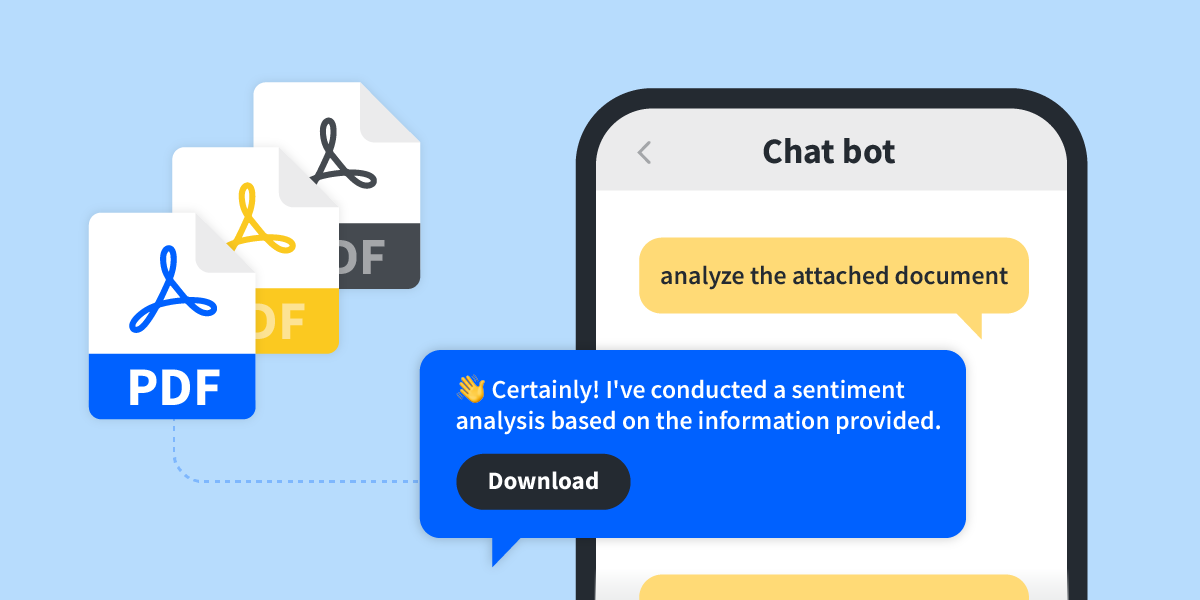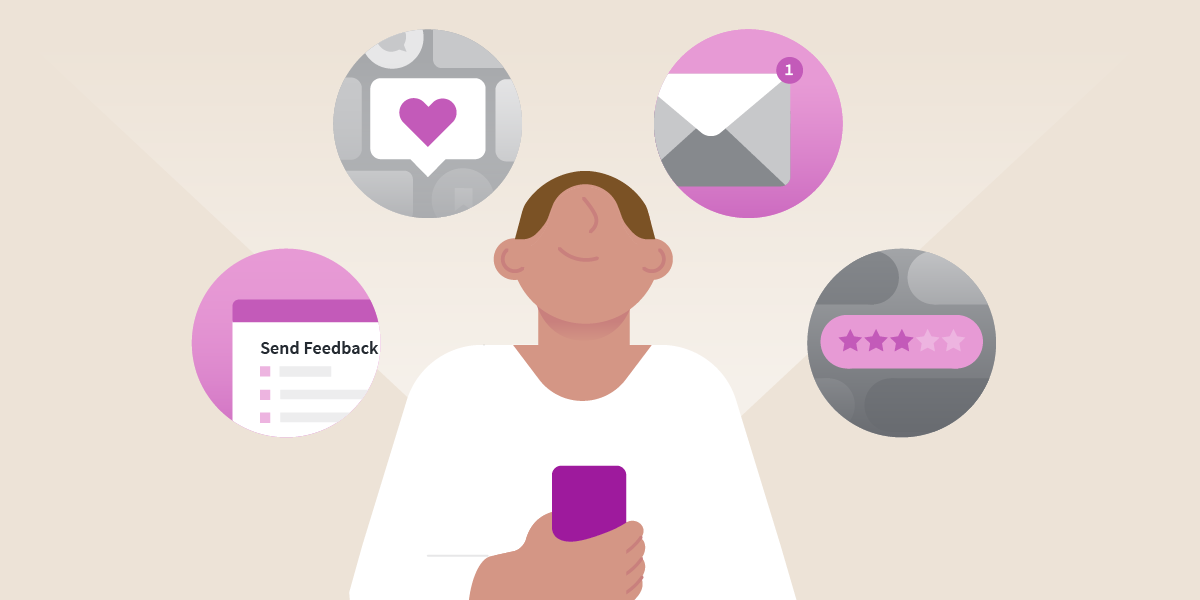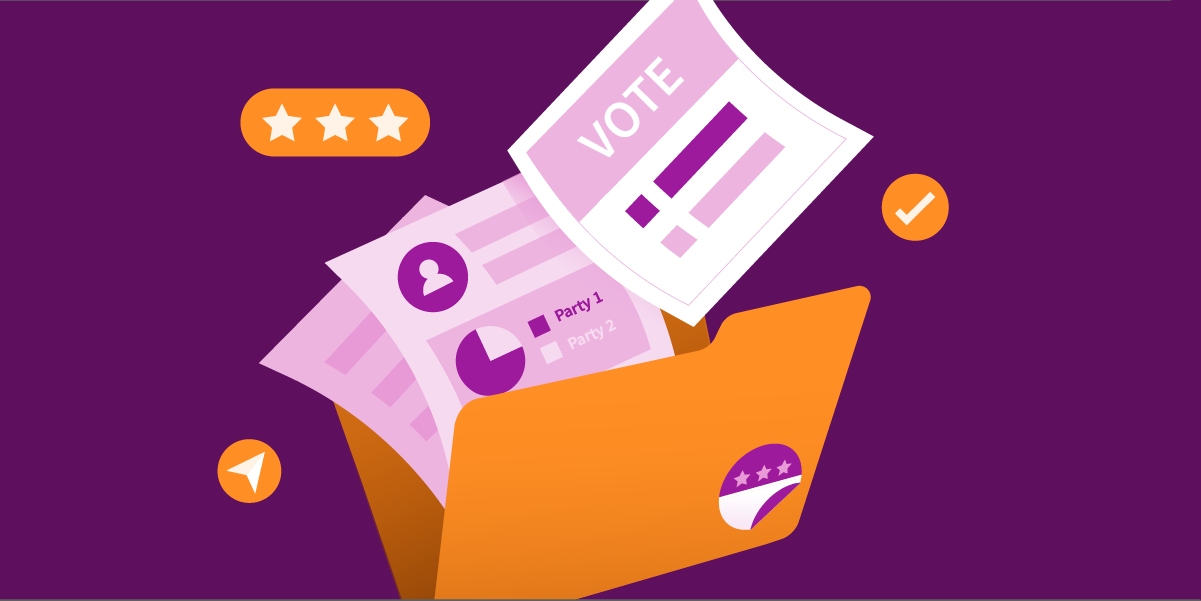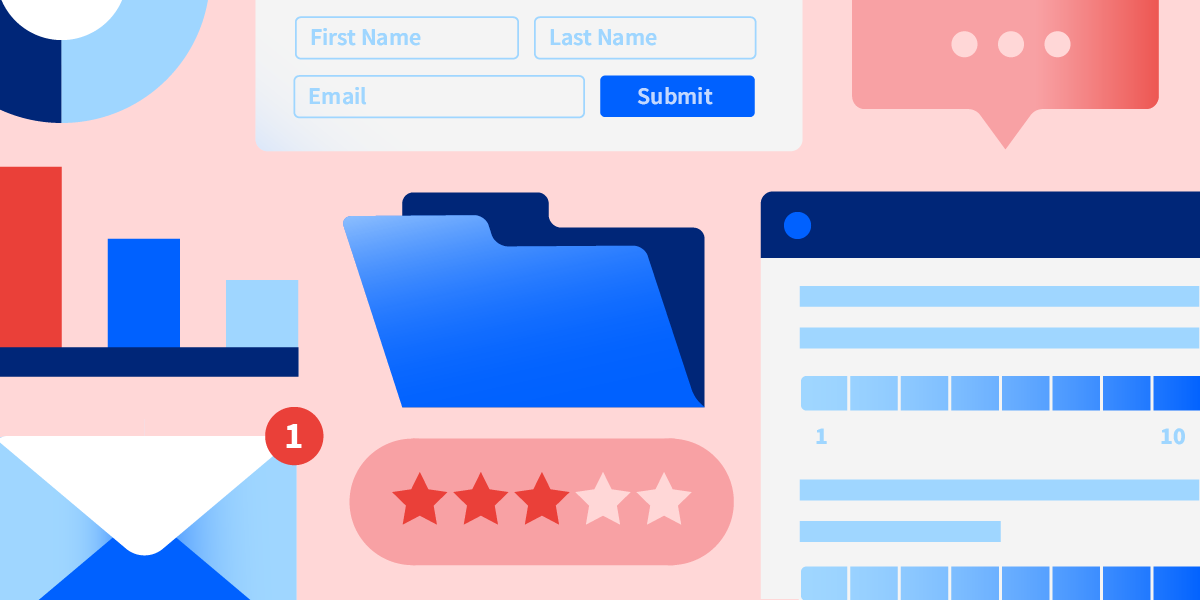B2B marketing is boring—at least that’s the sentiment doing the rounds in social media.
So B2B marketers are trying different gimmicks to make their ads fun, even weird—from Adobe’s Click, Baby, Click! ad to Zendesk’s “I like it when he gives me the business” commercial.
Those ads are clever. But do they convert? Hard to know.
What we know is that 77% of B2B buyers won’t purchase without personalized content. That means that your best bet is on customized experiences rather than humour.
As we enter a cookieless world, though, marketers’ ability to personalize their B2B campaigns is taking a hit.
Third-party cookies have traditionally enabled advertisers to track users’ browsing activities across different sites to target ads effectively. However, with their usage declining, you need to lean heavily on first-party data.
What is B2B First-Party Data?
First-party data is information collected directly from your sources (e.g. your CRM) about your customers and users. This includes interactions on your website, customer feedback, email subscriptions, and any direct engagements.
Using first-party data has several advantages over third-party data:
- Improved data quality and relevance: Since first-party data comes from direct interactions with your brand, it’s generally more accurate and relevant. This results in better insights and more effective targeting.
- Enhanced customer relationships: Using first-party data means you are engaging directly with those who have shown interest in your brand or have already interacted with you. This direct engagement helps build stronger, more personal relationships with potential and existing customers.
- Increased privacy compliance: You ensure compliance with data privacy regulations like GDPR and CCPA as this data is collected with explicit consent from your users.
There are some drawbacks, however, that you need to consider. For instance, you will need to enhance your data collection methods to compensate for the loss of third-party data. Consider employing more interactive content, better CRM tools, or compelling offers to encourage users to share their information willingly.
You might also need sophisticated data processing and analytics capabilities to get actionable insights from the data you collect.
The Role of B2B First-Party Data in Personalization
First-party data plays a pivotal role in crafting personalized experiences. It enables you to tailor your marketing efforts based on your customer’s specific needs and behaviours, providing them with a more relevant and engaging experience.
This personalization not only improves customer satisfaction but also boosts the effectiveness of your marketing campaigns.
As the advertising landscape evolves away from third-party cookies, first-party data isn’t just a backup plan—it’s the foundation of effective, compliant, and customer-centric marketing strategies in B2B.
Best Practices for Using First-Party Data in B2B Marketing
A report by Forrester and Acoustic reveals a significant gap between the importance marketers place on first-party data and their actual ability to collect it effectively.
- While 84% of marketers recognize the importance of channel engagement data from emails, mobile phones, or websites, only 68% successfully collect this data.
- Similar gaps exist in the collection of web and mobile data (81% find it important, but only 63% collect it) and real-time experience data (75% consider it critical, yet merely 47% gather it).
The primary challenge in collecting first-party data lies in the infrastructure required—for the data collection itself and for governance and compliance.
Your marketing strategy should focus on effectively collecting, managing, and leveraging first-party data to drive sales, personalize experiences, and enhance your marketing efforts.
Here are some best practices and strategies to help you in this process:
Collecting First-Party Data
A common tactic in B2B marketing for collecting data is to host events and webinars that require registration to obtain contact information and insights from the attendees.
If you are doing programmatic advertising, encourage more interactions with your ads by offering valuable content, interactive tools, or surveys that prompt users to share their information.
When companies lack the infrastructure to collect data, they can partner with data-rich platforms to extend their reach.
With StackAdapt, for example, you can onboard and activate your first-party data from your CRM, email marketing system, or conference and webinar registrations, and use it to target audiences that have shown interest in your business. Then, you can extend this first-party reach and impact by using your CRM data as a seed to build out lookalike audiences. Lookalike audiences use information about your first-party users to find audiences that look just like your ideal buyer.
Managing First-Party Data
Always obtain explicit consent when collecting data to comply with data protection laws and keep your data security measures stringent and up-to-date.
Use a robust CRM system to organize and manage your data effectively. Ensure your data is segmented and easily accessible for targeted marketing campaigns. Remember to keep your data fresh and accurate by regularly updating it and allowing customers to update their preferences. This ensures you are working with the most current information.
Leveraging First-Party Data
Use the insights gained from your data to tailor marketing messages and offers to meet the specific needs and interests of customers. Personalization can significantly increase engagement and conversion rates.
Break your audience into smaller segments based on their behaviour or demographics. Tailored messages to these segments can be more effective than broad campaigns.
Finally, analyze your data to predict future buying behaviours and preferences. This can guide your product development and marketing strategies, allowing you to meet customer needs proactively.
Enhancing Marketing Efforts
Implement account-based marketing (ABM). Use first-party data to identify key accounts and create personalized marketing campaigns focused on the specific needs and decision-making processes of those accounts.
Data insights help fine-tune your content strategy, ensuring it resonates well with your target audience. Develop content that addresses the specific challenges and needs of your segments.
Finally, optimize customer journeys—track and analyze how customers interact with your brand across different touchpoints. Use this data to optimize these interactions and improve customer satisfaction and loyalty.
These strategies will help you position your brand to capitalize on the depth and quality of insights that first-party data offers. But for B2B, the most valuable strategy is using first-party data to personalize your ABM campaigns.
Account-Based Marketing With Personalization
Using first-party data in your ABM efforts allows for more targeted and personalized experiences that resonate deeply with your key accounts.
Here’s how to leverage first-party data to refine your ABM strategies and integrate personalized content and offers.
- Deepen account insights: First-party data gives you a comprehensive view of how specific accounts interact with your brand, from website visits to email engagements. These insights allow you to understand the pain points, interests, and needs of each account more deeply, enabling highly-targeted campaign strategies.
- Refine targeting accuracy: Use the detailed information from your first-party data to create precise customer profiles for your key accounts. This level of detail increases the accuracy of your targeting, making your ABM efforts more relevant and impactful.
- Track engagement in real time: With real-time data on how accounts interact with your current campaigns, you can quickly adjust your strategies to optimize performance and engagement levels.
For instance, StackAdapt has a B2B targeting and measurement tool designed to reach verified B2B professionals. This tool allows for precise tracking of account-level engagement, helping you generate qualified leads more effectively. With its accurate and transparent attribution capabilities, you can create seamless end-to-end marketing strategies that integrate smoothly with sales and revenue operations.
Strategies for Personalized Content and Offers in ABM
Use the insights gathered from your first-party data to craft messages that speak directly to the specific context and business challenges of each account. Tailored messaging feels more relevant to the recipient, increasing the chances of engagement and conversion.
Even within a single account, there can be varying needs and preferences depending on the department or job role. Segment your contact lists by these criteria and customize your communications accordingly to address the unique needs of each subgroup.
Implement technology that adapts the content displayed on your ads, your website or in your emails based on the known preferences and past behaviours of account members. This could mean showing different content to different users from the same account when they visit your site.
You can also create personalized offers or incentives based on the purchase history and interaction data of an account. For example, if an account has shown interest in a particular service or product, offer a trial or a time-sensitive discount specifically tailored to that interest.
One way to do this is through dynamic creative optimization (DCO), which allows you to automatically create personalized ads based on data about the viewer at the moment of ad serving. This technology uses real-time data to change the creative elements of an ad to match the viewer’s preferences, behaviours, and context.
Overall, ensure that the personalized experience is consistent across all channels, from email to ads to your website. This consistency helps reinforce your message and brand, making each interaction feel more connected and thoughtful.
Measuring Success: The Impact of Personalization on B2B Sales
In B2B marketing, tracking the effectiveness of personalization strategies involves focusing on several key performance indicators (KPIs).
These metrics help you measure how well your personalized content and campaigns are resonating with your target audience and driving business objectives:
Conversion Rate: Track how many leads or customers are converted after receiving personalized messages compared to a generic approach. A higher conversion rate indicates successful personalization.
Engagement Rate: Measure the level of interaction with your personalized content across various platforms, like email opens, clicks, website visits, and social media engagement. Increased engagement rates suggest that the content is relevant and appealing to your audience.
Lead Quality and Sales Metrics: Assess the quality of leads generated through personalized campaigns. Look at the number of sales-qualified leads (SQLs) and the impact on sales metrics, such as deal size or sales cycle length, to determine if personalization is attracting better-fit customers.
Customer Retention Rates: Track retention rates to see if personalized approaches are improving customer loyalty and reducing churn.
Account Penetration: For account-based marketing, measure how deeply you are engaging with targeted accounts. Check if personalized content leads to broader engagement within key accounts, including increased contacts or cross-departmental interactions.
ROI and ROAS of personalized campaigns: Ultimately, evaluate the return on investment (ROI) and return on ad spend (ROAS) from personalized marketing efforts by comparing the revenue generated to the cost of the campaigns.
Keeping track of these metrics is hard if you don’t have the right tools and workflows in place. That’s why with StackAdapt, you can visualize account engagement and report on the metrics that matter most for B2B. You can track progress across the buyer’s journey, quantify your marketing dollars to prove ROAS, and understand who your interested and engaged accounts are so you can prioritize them with your sales team.
Interested in learning more? Request a demo today to see how StackAdapt can help you leverage your first-party data to grow your business.





